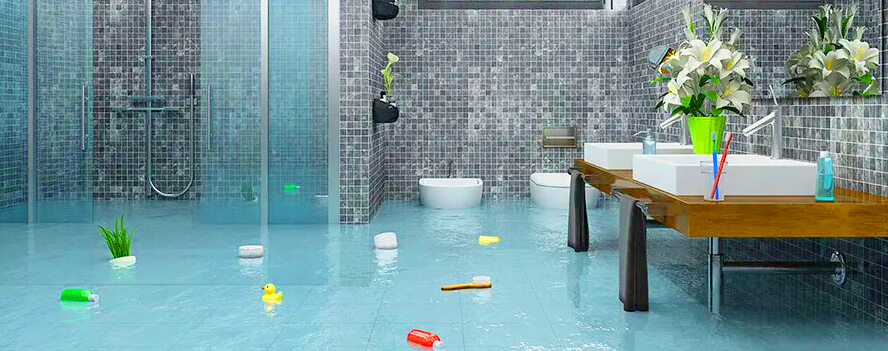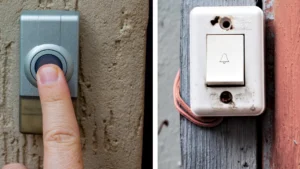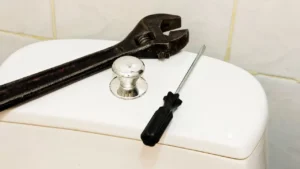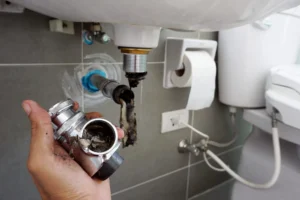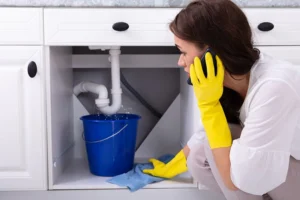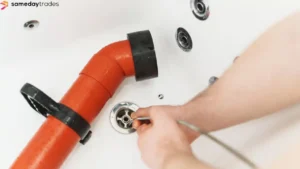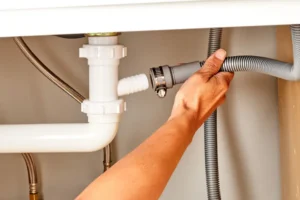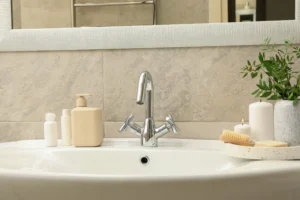Have you ever found yourself in ankle-deep murky water after you’re done showering? You’re most likely dealing with a blocked shower drain.
If shower water drains slowly or doesn’t move at all, it is called ‘standing water’ and is a sign that your drain is clogged. Now, this could be anything from small blockage or some major obstruction in your sewer line.
For the latter you’d need professional assistance but the former can be tackled at home. But, if you’re unsure of how to go about this task, we have some steps outlined for you.
Let’s dive into the dirty waters without further delay.
Fixing A Blocked Shower Drain
How To Know If Your Shower Drain Is Clogged?
Apart from the non-movement of water, you’ll find a foul smell coming out. In some serious cases, there might be leakages or your bathroom might start flooding too. If there are voids in shower grouts, then this standing water could creep into walls and cause damages.
Why Do Drain Blockages Occur?
Most drain blockages usually take place as dirt, soap scum, and hair build up. In particular, long hair tends to clog drains, while soap makes the situation worse by making this hair stick to drain walls. With time, it becomes increasingly hard for water to flow through due to such obstructions until it results in a blockage.
While you should try to remove such blockages, if they repeatedly happen all over your house, it is a sign that the main sewer line has a serious obstruction that needs professional treatment.
7 Methods To Unclog Blocked Shower Drains
1. Pour Boiling Water Into Drains
Hot water has the ability to break down soap or grease that might have accumulated and clear the passageway of these drains. Simply heating water and pouring it down the drain suffices, but you can use a funnel to concentrate this flow for better results.

Usually, this method used solely might not yield good results if the blockage has occurred over some time. But, you can apply it alongside one of the other methods listed below for effective solutions.
2. Using Plungers
This depends on two factors- the kind of blockage and drain design. If the clog happens to be deep and consists of a lot of hair, you’ll find it hard to get enough suction with plungers.
That said, while using it you should try to apply petroleum jelly to the edges for a better seal. Then add water to the covering the blocked shower drain so that your plunger is submerged and proceed to use it with force. While this method might not be immediately successful, it is a great starter solution involving little time and cost.
3. Using Vinegar And Baking Soda
As a natural alternative to chemicals you can resort to these options. First, pour a cup of baking soda down the drain and wait for some time before pouring in vinegar as well. See if the clog is dissolved after a few hours and wash it out with hot water for complete cleanliness.

Although this option is more ecologically viable, you’ll notice that sometimes using chemicals offers better and quicker results.
4. Using Hands To Pull Out Clogs
Though this method guarantees a fair amount of success a lot of homeowners don’t want to get their hands dirty. If it does come to relying on your strength to take off the blocked shower drain cover and pull out the clog, we advise wearing rubber gloves.
First, try and locate the clog; you might need to use a flashlight. If it is accessible, simply pull it out using sheer strength. While you’ll find this suitable for clogs with hair or smaller particles it is not as effective during mineral build-up.
5. Using Hooks
Proven as one of the oldest and most effective methods, this is not so different from using your hands. Of course, a hook is useful if the clog isn’t as accessible. We advise devising it from wire hangers and trying to pull out the clog.
Most of the steps mentioned above have to be followed here as well but you should keep in mind that it isn’t very useful in the case of mineral deposits.
6. Using Toilet Jacks
Also known as an electric eel or a plumbers’ snake, this method is cheap and yields good results. Using it is simple too because all you have to do is put the tool down your drain and then turn its handle before bringing it up again.
This should remove the clog entirely but you can always run water for testing whether the drain is clear. If your clog is caused by roots then this tool won’t be too effective, but mostly you’ll see clogs are rather simple to clear out and don’t need this tool to be used.
7. Using Chemicals
Strong chemical cleaners are easily available at hardware stores and are guaranteed to clear out any clogs. But, you should read the instructions and apply them carefully. Be careful about the amounts you use and always keep your mask and goggles on for safety.
Ensure that chemicals aren’t mixed together because it results in poisonous gases and while applying them always try and pour the entire thing down the drain in one go.
Although chemicals are affordable and extremely effective, be sure not to use them lightly. If applied repeatedly, they are bound to damage the drainage pipes over time. Therefore, this should be one of the last resorts.
Prevent Future Clogs
We believe that prevention is always better than cure, so even if you have managed to unclog your blocked shower drain there are steps you can take to prevent it from happening again. For starters, get a drain protector that can catch hair and other debris to prevent blocks.
Secure soap dishes also prevent such mishaps because soap is a major contributor in making debris clump up and causing blocked shower drains.
Final Words
Following the steps outlined above, you’ll find your previously blocked shower drain uncluttered, leaving you to enjoy taking baths in peace. However, if none of the above methods work, consider contacting a plumber.
Of course, this is the most expensive solution but also one where personal hassles are zero. We take our leave here but do feel free to reach out if you have any other doubts about this process.

